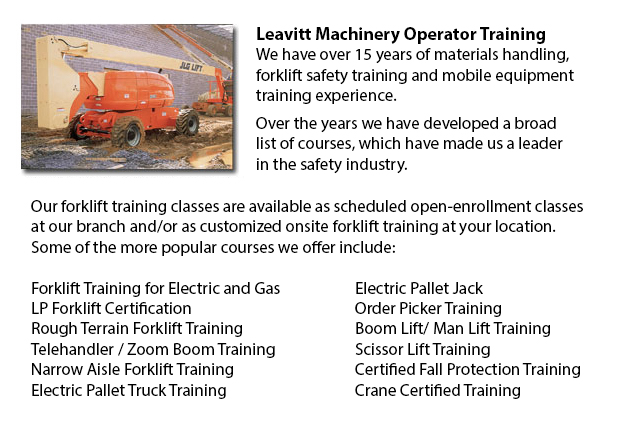
Oakville Aerial Platform Training - Aerial hoists can be used to accomplish a lot of distinctive duties executed in hard to reach aerial spaces. Many of the duties associated with this type of jack include performing regular preservation on buildings with elevated ceilings, repairing telephone and power cables, lifting burdensome shelving units, and pruning tree branches. A ladder could also be used for some of the aforementioned tasks, although aerial platform lifts offer more security and strength when correctly used.
There are a handful of distinctive versions of aerial hoists existing, each being able to perform moderately unique jobs. Painters will sometimes use a scissor lift platform, which is able to be used to get in touch with the 2nd story of buildings. The scissor aerial platform lifts use criss-cross braces to stretch and lengthen upwards. There is a platform attached to the top of the braces that rises simultaneously as the criss-cross braces elevate.
Container trucks and cherry pickers are a different kind of aerial hoist. They contain a bucket platform on top of a long arm. As this arm unfolds, the attached platform rises. Lift trucks use a pronged arm that rises upwards as the handle is moved. Boom lift trucks have a hydraulic arm which extends outward and raises the platform. All of these aerial lifts have need of special training to operate.
Training courses presented through Occupational Safety & Health Association, acknowledged also as OSHA, deal with safety methods, machine operation, maintenance and inspection and machine load capacities. Successful completion of these training courses earns a special certified license. Only properly licensed people who have OSHA operating licenses should drive aerial lifts. The Occupational Safety & Health Organization has developed rules to uphold safety and prevent injury when using aerial lifts. Common sense rules such as not utilizing this machine to give rides and making sure all tires on aerial platform lifts are braced so as to hinder machine tipping are observed within the guidelines.
Unfortunately, statistics reveal that more than 20 aerial lift operators pass away each year when operating and nearly ten percent of those are commercial painters. The majority of these mishaps were triggered by improper tie bracing, for that reason many of these could have been prevented. Operators should ensure that all wheels are locked and braces as a critical safety precaution to stop the instrument from toppling over.
Marking the surrounding area with visible markers need to be utilized to safeguard would-be passers-by so they do not come near the lift. Moreover, markings should be placed at about 10 feet of clearance between any electrical lines and the aerial hoist. Hoist operators should at all times be appropriately harnessed to the hoist while up in the air.
-
Oakville Overhead Crane Safety Training
Oakville Overhead Crane Safety Training - Overhead crane safety training equips operators with skills and knowledge regarding crane safety measures, accident avoidance, materials handling, and machinery and stock protection. Trainees will learn the t... More -
Oakville Crane Training Schools
Oakville Crane Training Schools - Our various Mobile Crane Operation programs are designed for skilled operators who needs re-certification or certification, and for inexperienced individuals who are seeking their very first job as an operator of a c... More -
Oakville Overhead Crane Certification
Oakville Overhead Crane Certification - The overhead crane certification course is a course that is designed to help trainees, even though they have language or literacy limits. The course consists of a classroom theory part and a practical hands-on... More -
Oakville Forklift Training Programs
Oakville Forklift Training Programs - If you are searching for work as an operator of a forklift, our regulatory-compliant forklift training programs provide exceptional instruction in various types and styles of forklifts, classes on pre-shift inspe... More -
Oakville Fall Protection Ticket
Oakville Fall Protection Ticket - The number one cause of death in the construction business come from fall-related accidents. There is more possibility for fall accidents depending on the types of work being performed within your workplace. Thus, be... More -
Oakville Zoom Boom Training
Oakville Zoom Boom Training - Zoom Boom Training focuses on correctly training potential operators on variable reach forklifts. The training objectives consist of gaining the understanding of the machine's physics and to define the job of the operato... More -
Oakville Aerial Lift Ticket
Oakville Aerial Lift Ticket - A boom truck is often recognized by the cable and telephone company vans that have the elongated arm folded over their roofs. Commonly, a bucket-like apparatus sits at the extension of extendable arms. Often referred to... More -
Oakville Scissor Lift Training
Oakville Scissor Lift Training - Scissor lifts need to be operated competently to be able to protect the safety of the machinery and the safety of people in the workplace. Operators who are skilled are trained to drive the specific model of scissor l... More

Forklift Certification Oakville
TOLL FREE: 1-888-254-6157
Oakville, Ontario
forkliftcertificationoakville.com
Email Us
About Us


